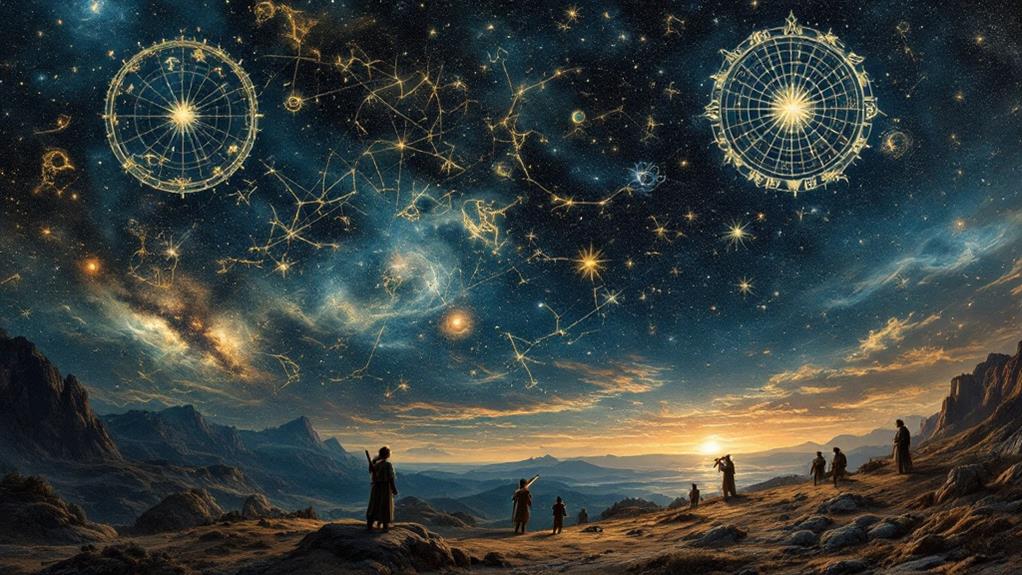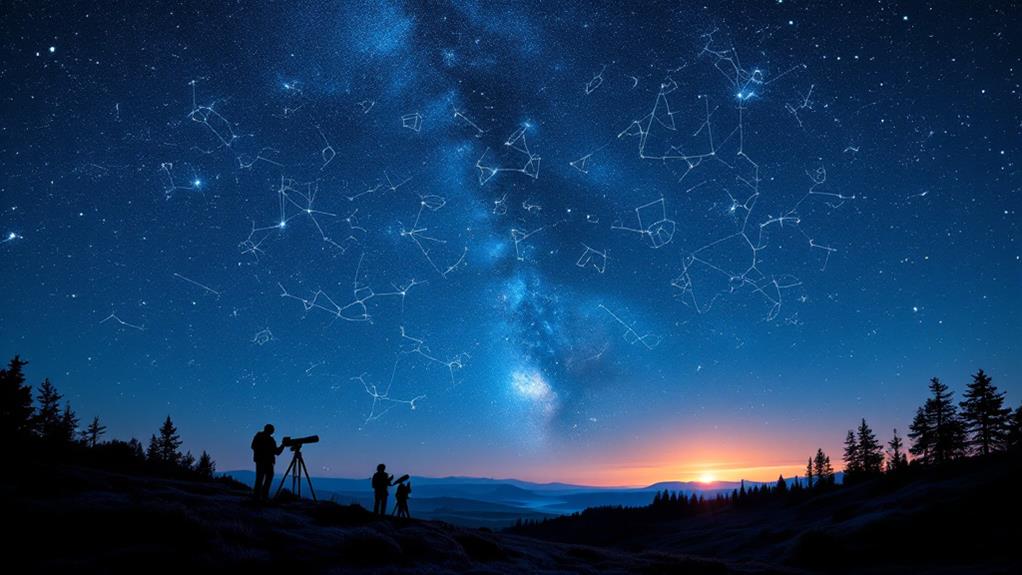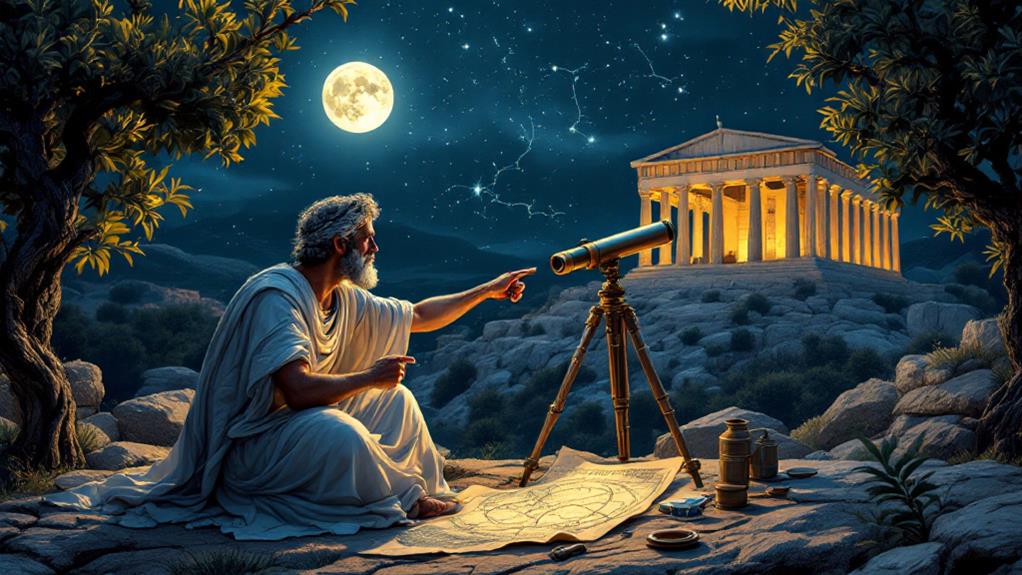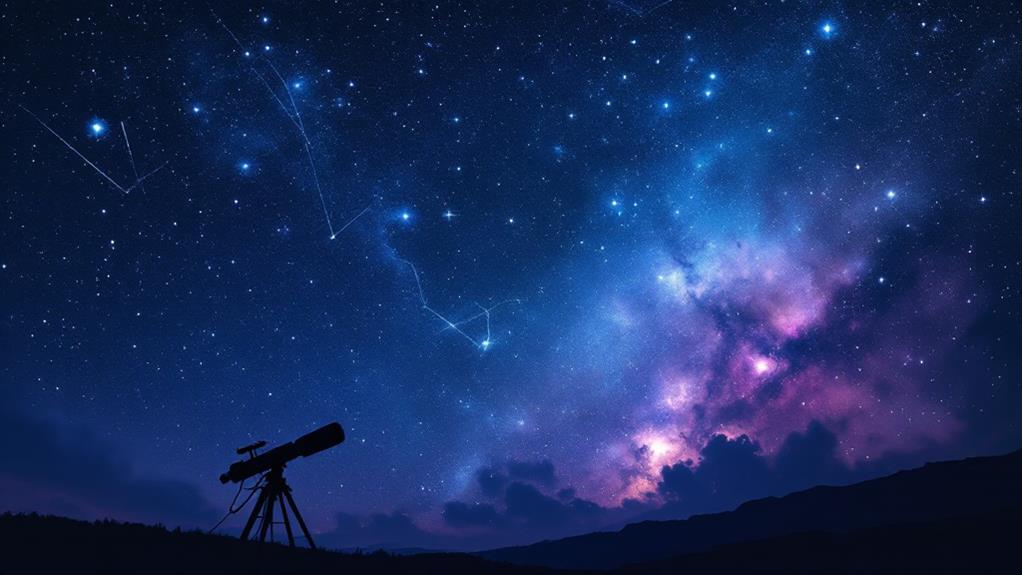When and Where Is the Constellation Hercules Visible?
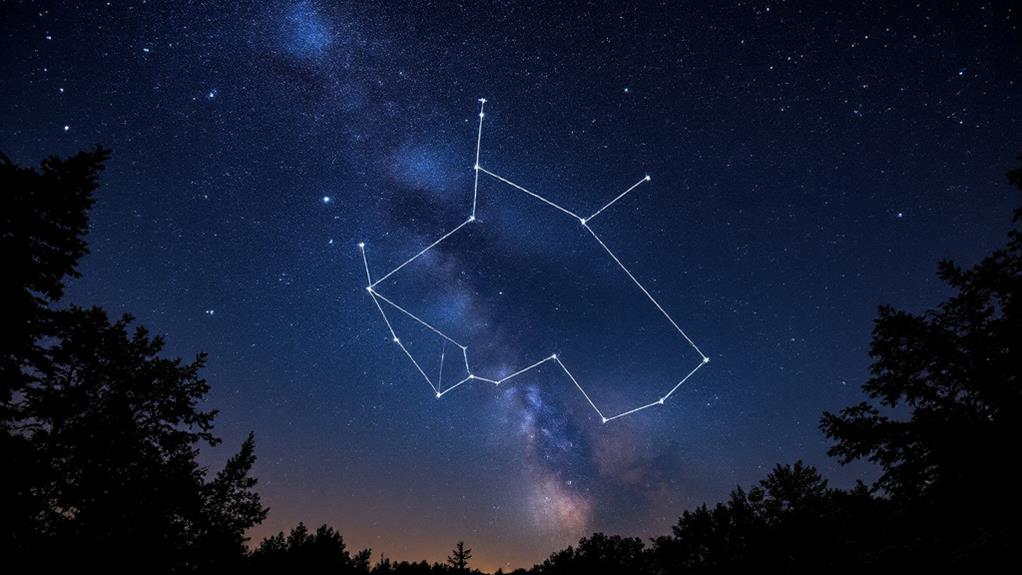
You can spot Hercules in both the Northern and Southern Hemispheres, but its visibility changes throughout the year. In the Northern Hemisphere, it's most prominent during summer evenings, peaking around midnight in June. Southern Hemisphere observers see it best during winter months (June to August). The constellation appears higher in the sky for northern viewers and closer to the horizon in the south. Look for the distinctive "Keystone" shape formed by four stars between Vega and Arcturus. To maximize your chances of observing Hercules, choose a dark location away from city lights and let your eyes adjust. There's much more to explore about this celestial hero's passage across the night sky.
The Mythology of Hercules
The legend of Hercules stands out among Greek myths. You've likely heard of this legendary hero, renowned for his incredible strength and courage. Hercules' story embodies the classic hero's odyssey, filled with trials, triumphs, and personal growth.
Born of divine lineage, Hercules was the son of Zeus and a mortal woman. His extraordinary abilities drew the jealousy of Hera, Zeus's wife, who tormented him throughout his life. Despite these challenges, Hercules became a symbol of perseverance and heroism. The Ursa Major constellation and the Big Dipper were often used by sailors and travelers to locate helpful stars, including those associated with the Hercules constellation.
The mythology of Hercules centers around his famous Twelve Labors, a series of seemingly impossible tasks he had to complete as penance for a terrible crime. These labors included slaying monsters, capturing mythical beasts, and performing superhuman feats. Each labor tested Hercules' strength, wit, and resolve.
Upon completing his labors, Hercules continued to have escapades and aid those in need. His heroic deeds and unwavering determination eventually earned him immortality. After his death, the gods granted him a place among the stars, immortalizing his legend in the night sky as the constellation that bears his name.
Locating Hercules in the Sky
Finding Hercules in the night sky can be an exciting challenge for amateur stargazers. To locate this constellation, you'll need to understand its position relative to other celestial landmarks. Hercules is situated between the bright stars Vega and Arcturus, forming part of the Summer Triangle asterism. The Hercules constellation is part of the Northern sky constellations, so it is best visible in the Northern Hemisphere.
Look for the distinctive "Keystone" shape, which represents Hercules' torso. It's a trapezoid formed by four stars: Pi, Eta, Zeta, and Epsilon Herculis. Once you've identified this shape, you can trace the rest of the constellation, including his arms and legs.
Hercules' night sky visibility varies throughout the year due to the Earth's rotation and the constellation's movement across the celestial sphere. It's most visible in the Northern Hemisphere during summer evenings, reaching its highest point in July. In the Southern Hemisphere, it appears lower on the northern horizon and is best seen during winter months.
To improve your chances of spotting Hercules, choose a dark location away from city lights and allow your eyes to adjust to the darkness. Use a star chart or smartphone app to help guide your search, and remember that patience is key when exploring the night sky.
Best Viewing Seasons
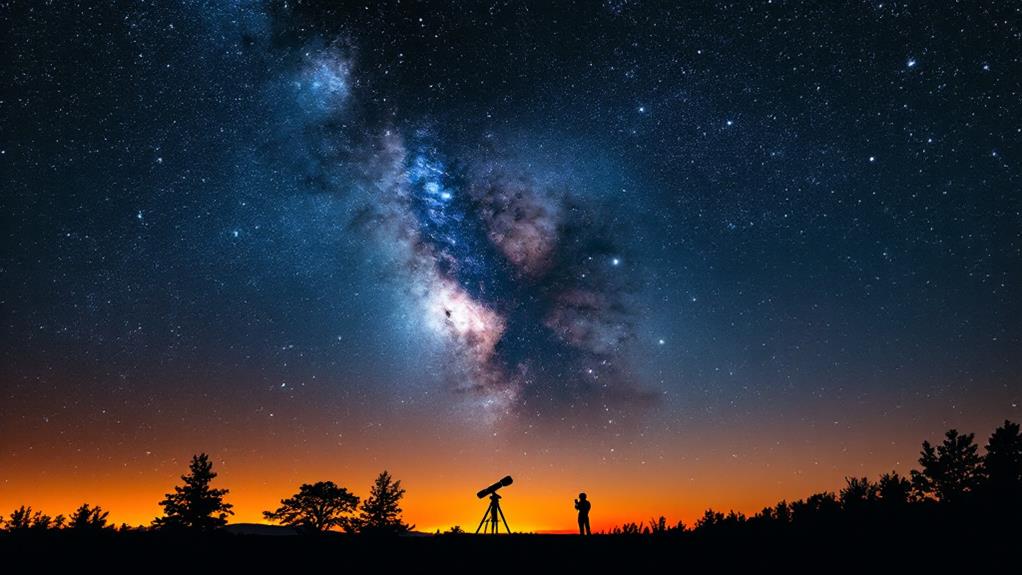
Seasoned stargazers know that Hercules' visibility changes throughout the year. To catch the best views of this majestic constellation, you'll want to plan your observations during its ideal visibility periods.
In the Northern Hemisphere, Hercules is most prominent during the summer months. From late spring through early autumn, you'll find it high in the night sky, offering excellent viewing opportunities. The constellation reaches its peak visibility in July and August, when it's almost directly overhead for many observers.
To maximize your chances of spotting Hercules, aim for clear, moonless nights during these months. Favorable weather conditions, such as low humidity and minimal light pollution, will immensely enhance your viewing experience. Late evenings and early mornings often provide the best atmospheric stability for stargazing.
While Hercules is technically visible year-round for many northern observers, its position near the horizon during winter months makes it challenging to see. If you're in the Southern Hemisphere, your best viewing window is during the winter months, particularly from June to August, when Hercules appears higher in the northern sky.
Northern Hemisphere Visibility
For observers in the Northern Hemisphere, Hercules offers a spectacular celestial show throughout much of the year. This prominent constellation's visibility varies with the changing northern hemisphere seasons, becoming increasingly prominent as spring progresses into summer.
You'll find Hercules high in the night sky during summer evenings, reaching its peak visibility around midnight in June. As autumn approaches, you can spot it in the western sky during the early evening hours. In winter, Hercules dips below the horizon for most of the night but resurfaces in the predawn eastern sky by late winter.
The constellation's visibility is also influenced by northern hemisphere geography. Observers at higher latitudes will see Hercules for longer periods, as it remains circumpolar (always above the horizon) for locations above 50°N latitude. In contrast, those closer to the equator will have a shorter viewing window.
To locate Hercules, look for its distinctive "Keystone" asterism – a quadrilateral shape forming the hero's torso. It's situated between the bright stars Vega and Arcturus, making it relatively easy to find once you've familiarized yourself with these celestial landmarks.
Southern Hemisphere Visibility
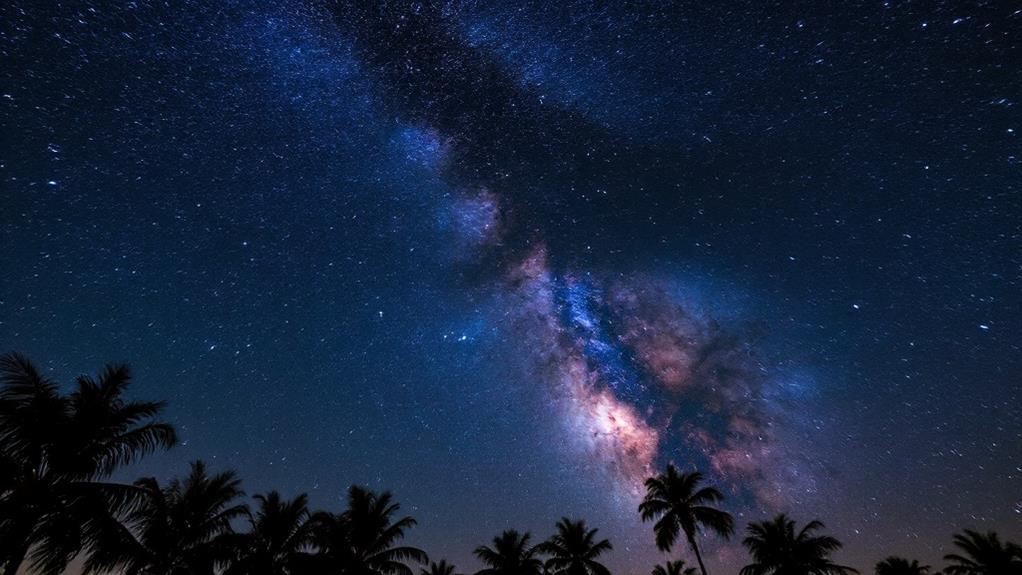
From the southern hemisphere, Hercules presents a different viewing experience compared to its northern counterpart. If you're observing from a southern hemisphere location, you'll find that Hercules appears inverted and closer to the northern horizon. This positioning affects its visibility and the best times for observation.
In the southern hemisphere, Hercules is most visible during the winter months, which occur from June to August. During this time, you'll have the greatest chance of spotting the constellation in the evening sky. As you move towards spring and summer, Hercules becomes increasingly difficult to see, eventually disappearing below the horizon for much of the night.
The farther south you are, the more challenging it becomes to view Hercules. In locations close to the equator, you'll still have a good chance of seeing the constellation, but it will appear lower in the sky. If you're in the mid-latitudes of the southern hemisphere, you'll need to look towards the northern horizon during the ideal viewing months. Seasonal visibility changes are more pronounced in the southern hemisphere, so timing your observations is paramount for the best viewing experience.
Key Stars in Hercules
The constellation of Hercules boasts several notable stars that you'll want to look out for during your stargazing sessions. At the heart of this celestial figure lies the "Keystone," a prominent asterism formed by four stars: Pi, Eta, Zeta, and Epsilon Herculis. This trapezoid-shaped pattern serves as an excellent starting point for identifying the constellation.
The brightest star in Hercules is Beta Herculis, also known as Kornephoros, which means "club bearer" in Greek. You'll find it shining at magnitude 2.8 near the hero's right shoulder. Another significant star is Alpha Herculis, or Rasalgethi, a red giant variable star that forms Hercules' head in the star patterns.
Don't miss Zeta Herculis, a binary star system visible to the naked eye, or Mu Herculis, a multiple star system with four components. For a real treat, use binoculars or a small telescope to spot M13, the Great Globular Cluster in Hercules. This stunning ball of stars is one of the brightest globular clusters visible from the Northern Hemisphere, located between Eta and Zeta Herculis in the Keystone asterism.
Hercules and the Celestial Sphere
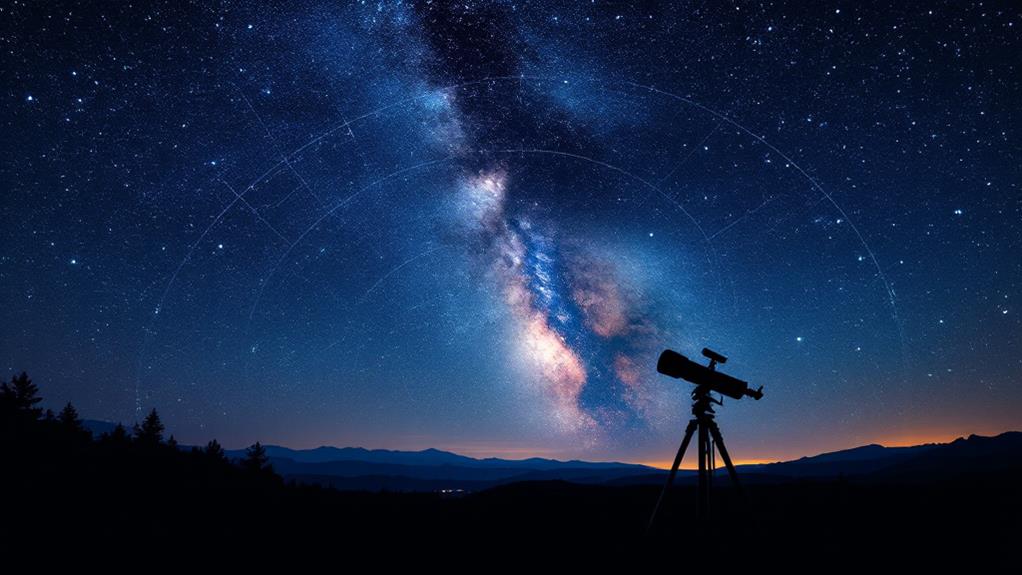
While the individual stars of Hercules offer fascinating viewing opportunities, understanding the constellation's place in the celestial sphere provides a broader vantage point on its significance. Hercules occupies a prominent position in the northern celestial hemisphere, spanning roughly 1,225 square degrees. You'll find it nestled between Draco to the north and Ophiuchus to the south.
As you observe Hercules, you're witnessing a celestial equator representation that's been recognized for millennia. The constellation's placement relative to other celestial bodies has played an integral role in various celestial mythology interpretations across cultures. In Greek mythology, Hercules is described kneeling, which aligns with its position in the sky.
When you're stargazing, you'll notice that Hercules is circumpolar in many northern latitudes, meaning it never sets below the horizon. This constant presence has contributed to its importance in orientation and timekeeping throughout history. As you survey the night sky, remember that Hercules isn't just a collection of stars – it's a window into our understanding of the universe and our place within it.
Observing Tips for Hercules
Observing Hercules can be a rewarding experience for both novice and experienced stargazers. To make the most of your viewing session, you'll want to find a location with dark sky conditions, away from city lights and other sources of light pollution. The constellation is best seen during summer months in the Northern Hemisphere, particularly from June to September.
For naked-eye observation, look for the distinctive "Keystone" asterism, which forms the body of Hercules. It's located between the bright stars Vega and Arcturus. Once you've found the Keystone, you can trace the rest of the constellation's shape.
If you're using a telescope, proper setup is essential. Align your telescope and let it acclimate to the outdoor temperature for about 30 minutes before observing. Focus on the globular cluster M13, the constellation's most famous deep-sky object. It's visible with binoculars but truly spectacular through a telescope. Don't forget to investigate other interesting targets like the double star Rasalgethi (Alpha Herculis) and the planetary nebula NGC 6210. Remember to be patient and take your time adjusting your eyes to the darkness for the best viewing experience.
Neighboring Constellations
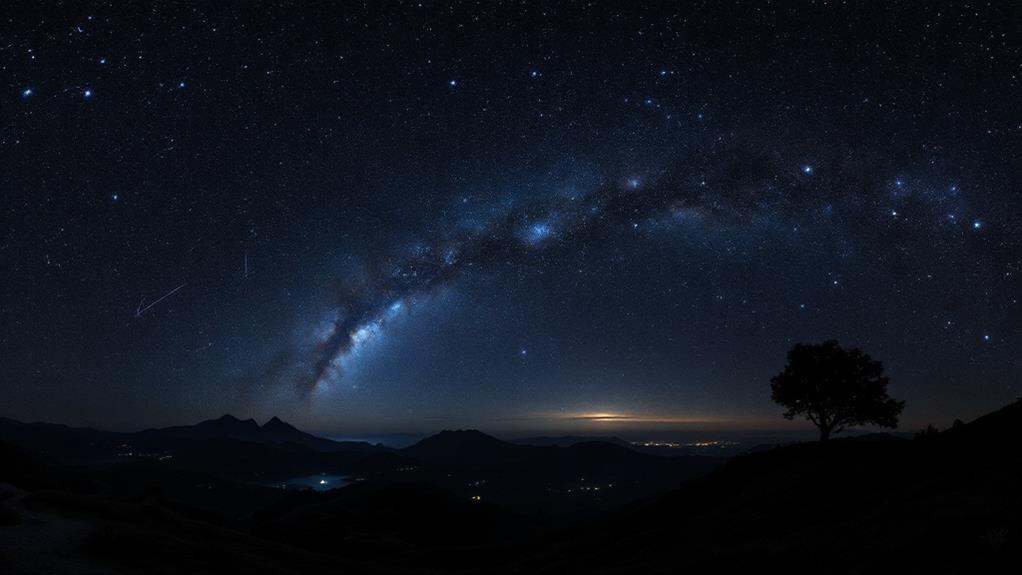
Surrounded by a celestial neighborhood, Hercules shares borders with seven other constellations. To the north, you'll find Draco, the dragon, with its long, winding shape. To the east, you'll spot the small but distinctive Northern Crown (Corona Borealis) and the kite-shaped Boötes. Hercules' southern neighbors include Ophiuchus, the serpent bearer, and Serpens, the snake, which is split into two parts.
To the west, you'll encounter the bright star Vega in Lyra, the lyre, and the expansive wings of Cygnus, the swan. These surrounding constellations offer unique asterism shapes that can help you locate Hercules in the night sky. For example, you can use the bright Summer Triangle, formed by Vega (in Lyra), Deneb (in Cygnus), and Altair (in Aquila), as a starting point to find Hercules.
When exploring Hercules' neighbors, don't miss notable deep sky objects like the Ring Nebula in Lyra, the Dumbbell Nebula in Vulpecula, or the stunning double star Albireo in Cygnus. These celestial wonders complement Hercules' own impressive features, like the globular cluster M13.
Hercules Through Different Cultures
The constellation Hercules has a rich history that extends far beyond its Greek origins. As you plunge into its cultural depictions, you'll find that many civilizations have their own interpretations of this celestial figure.
In ancient Babylonian astronomy, you'd recognize Hercules as the "Standing Man." The Sumerians associated it with Gilgamesh, their legendary hero. If you were an Egyptian stargazer, you'd see it as representing Horus, the falcon-headed god.
Chinese astronomers didn't view Hercules as a single constellation. Instead, they divided its stars among several smaller asterisms, each with its own mythological significance. In Hindu astrology, you'd find that parts of Hercules form Vishaka, one of the 27 Nakshatras or lunar mansions.
Native American tribes had their own stories about these stars. The Navajo, for instance, saw them as part of "First Big One," a protective sky spirit.
As you can see, Hercules' cultural importance isn't limited to Greek mythology. Its stars have inspired diverse interpretations across the globe, reflecting the rich tapestry of human imagination and celestial observation throughout history.
Frequently Asked Questions
How Many Stars Make up the Main Shape of the Hercules Constellation?
When you look for the Hercules constellation, you'll find that its main shape is formed by 4 main stars. These stars create a distinctive kite shape, which is often referred to as the "Keystone" of Hercules. It's an easily recognizable pattern that'll help you identify this constellation in the night sky. As you observe Hercules, you'll notice that these 4 stars serve as the central anchors for the rest of the constellation's stars.
Are There Any Notable Deep-Sky Objects Within the Hercules Constellation?
You'll find several fascinating deep-sky objects within the Hercules constellation. It's home to two remarkable globular clusters: M13, the Great Hercules Cluster, and M92. These dense spherical collections of stars are breathtaking through a telescope. You'll also observe planetary nebulae, like NGC 6210, known as the Turtle Nebula. These expanding shells of gas from dying stars create ethereal, colorful sights. Don't miss the chance to investigate these celestial wonders in Hercules!
What Is the Magnitude of the Brightest Star in Hercules?
You'll find the brightest star in Hercules to be Kornephoros, also known as Beta Herculis. It's not exceptionally bright, with a magnitude of 2.81. This star's brightness is relatively modest compared to some other constellations' luminaries. When you're observing Hercules constellation visibility, you'll notice that Kornephoros, while the brightest in its group, doesn't particularly stand out in the night sky. It's a good reference point for locating other features within Hercules.
Can Hercules Be Seen With the Naked Eye or Binoculars?
You can easily spot Hercules with your naked eye or binoculars. It's a large constellation that's best visible during summer months, particularly from northern latitudes. Look for its distinctive "keystone" shape formed by four bright stars. With binoculars, you'll see even more details and fainter stars within the constellation. Don't worry if you can't find it right away; practice and patience will help you locate this mighty hero in the night sky.
How Long Does It Take for Hercules to Complete One Rotation Around Earth?
You might be mistaken about Hercules' orbital period and rotational characteristics. Hercules isn't a planet or moon that orbits Earth; it's a constellation. Constellations don't rotate around Earth; they're fixed patterns of stars visible from our planet. Earth's rotation makes it appear as if Hercules moves across the night sky, but it's not actually moving around us. The constellation's visibility changes throughout the year due to Earth's orbit around the Sun.

